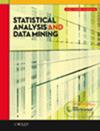Sequential metamodel‐based approaches to level‐set estimation under heteroscedasticity
IF 3.6
4区 数学
Q3 COMPUTER SCIENCE, ARTIFICIAL INTELLIGENCE
引用次数: 0
Abstract
This paper proposes two sequential metamodel‐based methods for level‐set estimation (LSE) that leverage the uniform bound built on stochastic kriging: predictive variance reduction (PVR) and expected classification improvement (ECI). We show that PVR and ECI possess desirable theoretical performance guarantees and provide closed‐form expressions for their respective sequential sampling criteria to seek the next design point for performing simulation runs, allowing computationally efficient one‐iteration look‐ahead updates. To enhance understanding, we reveal the connection between PVR and ECI's sequential sampling criteria. Additionally, we propose integrating a budget allocation feature with PVR and ECI, which improves computational efficiency and potentially enhances robustness to the impacts of heteroscedasticity. Numerical studies demonstrate the superior performance of the proposed methods compared to state‐of‐the‐art benchmarking approaches when given a fixed simulation budget, highlighting their effectiveness in addressing LSE problems.基于序列元模型的异方差下水平集估计方法
本文提出了两种基于序列元模型的水平集估计(LSE)方法,它们利用了建立在随机克里金基础上的均匀约束:预测方差缩小(PVR)和预期分类改进(ECI)。我们证明了 PVR 和 ECI 具有理想的理论性能保证,并为它们各自的顺序采样准则提供了闭式表达式,以便在执行模拟运行时寻找下一个设计点,从而实现计算高效的单迭代前瞻性更新。为了加深理解,我们揭示了 PVR 和 ECI 的顺序采样准则之间的联系。此外,我们还建议将预算分配功能与 PVR 和 ECI 相结合,从而提高计算效率,并增强对异方差影响的稳健性。数值研究表明,在给定固定模拟预算的情况下,与最先进的基准方法相比,所提出的方法具有更优越的性能,突出了它们在解决 LSE 问题方面的有效性。
本文章由计算机程序翻译,如有差异,请以英文原文为准。
求助全文
约1分钟内获得全文
求助全文
来源期刊

Statistical Analysis and Data Mining
COMPUTER SCIENCE, ARTIFICIAL INTELLIGENCEC-COMPUTER SCIENCE, INTERDISCIPLINARY APPLICATIONS
CiteScore
3.20
自引率
7.70%
发文量
43
期刊介绍:
Statistical Analysis and Data Mining addresses the broad area of data analysis, including statistical approaches, machine learning, data mining, and applications. Topics include statistical and computational approaches for analyzing massive and complex datasets, novel statistical and/or machine learning methods and theory, and state-of-the-art applications with high impact. Of special interest are articles that describe innovative analytical techniques, and discuss their application to real problems, in such a way that they are accessible and beneficial to domain experts across science, engineering, and commerce.
The focus of the journal is on papers which satisfy one or more of the following criteria:
Solve data analysis problems associated with massive, complex datasets
Develop innovative statistical approaches, machine learning algorithms, or methods integrating ideas across disciplines, e.g., statistics, computer science, electrical engineering, operation research.
Formulate and solve high-impact real-world problems which challenge existing paradigms via new statistical and/or computational models
Provide survey to prominent research topics.
 求助内容:
求助内容: 应助结果提醒方式:
应助结果提醒方式:


